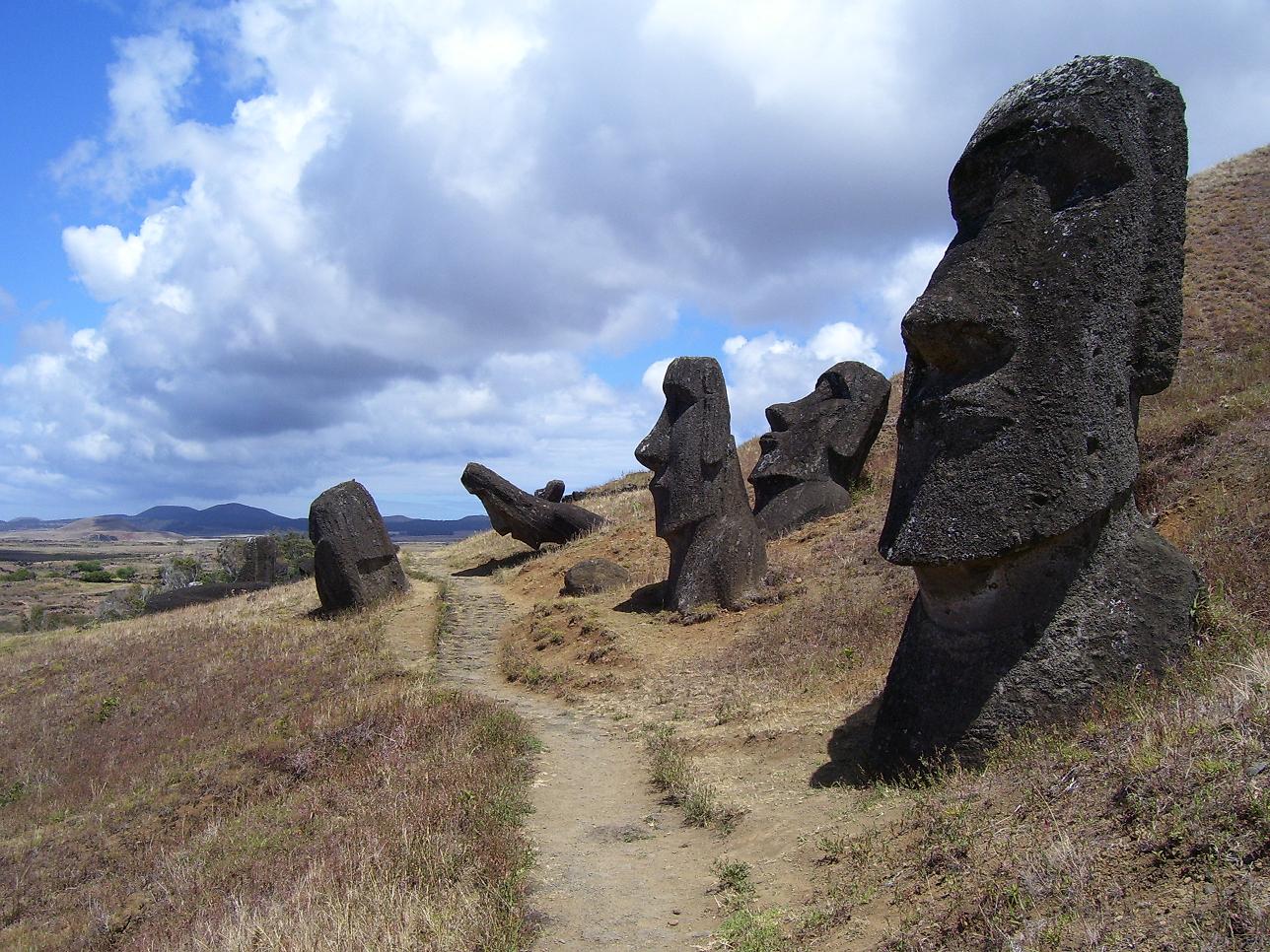Easter Island, also known as Rapa Nui, is a remote volcanic island in Polynesia, located in the southeastern Pacific Ocean. It is one of the most isolated inhabited islands in the world, situated approximately 3,500 kilometers west of Chile's mainland coast. The island is renowned for its archaeological heritage, most prominently for the moai statues created by the early Rapa Nui people. These massive stone figures, which number over 900, are dispersed throughout the island and are believed to represent the ancestors or deities of the local people. The history of the island is marked by its settlement around 1200 AD by Polynesians and its subsequent development into a unique culture with its own script and impressive architectural structures.
The moai statues stand as a testament to the islanders' architectural and artistic skills and have become a symbol of mystery due to their enigmatic abandonment and the methods used for their construction and transportation. Easter Island's cultural importance is also underscored by its designation as a UNESCO World Heritage Site, highlighting its significance in the study of Polynesian history and culture. Notable landmarks on the island include Rano Raraku, the quarry where the moai were carved, and Ahu Tongariki, which is the largest ceremonial platform that aligns with the rising sun during the solstice.
The island has a subtropical climate, with temperatures moderated by oceanic winds, creating mild and dry weather conditions year-round. Easter Island features rugged terrain with three extinct volcanoes, offering breathtaking landscapes and a rich ecosystem despite its isolation. The Tapati Rapa Nui Festival is a vibrant cultural event held annually to celebrate Rapa Nui traditions, language, music, and dance. It serves as an important platform for the island's community to preserve their history and entertain visitors with traditional competitions, such as canoeing, body painting, and carving.
An interesting fact about Easter Island is that it was named by a Dutch explorer, Jacob Roggeveen, who encountered it on Easter Sunday in 1722. The island's unique geographic location and its historical narrative, marked by periods of ecological and societal change, provide crucial insights into concepts of sustainability and the impact of human activity on the environment.
 Horacio_Fernandez
, CC BY 3.0, via Wikimedia Commons
Horacio_Fernandez
, CC BY 3.0, via Wikimedia CommonsChileLatin America & Caribbean
Nearby Places
Log in to write a review.
Sustainable Travel Tips
Plan Mindfully
- Choose direct flights when possible
- Travel during off-peak seasons
- Pack light and bring reusables
- Prefer eco-friendly accommodations
At Your Destination
- Use public transport or walk
- Support local businesses
- Respect wildlife and habitats
- Choose activities with minimal impact
Daily Habits
- Reuse hotel towels
- Take shorter showers
- Turn off lights/AC when out
- Carry a reusable water bottle
